Cleaning and cooking and so many dishes
Out with the hametz, no pasta, no knishes
Fish that's gefillted, horseradish that stings
These are a few of our Passover things.
Matzoh and karpas and chopped up haroset
Shankbones and kiddish and yiddish neuroses
Tante who kvetches and uncle who sings
These are a few of our Passover things.
Motzi and maror and trouble with Pharoahs
Famines and locusts and slaves with wheelbarrows
Matzah balls floating and eggshells that cling
These are a few of our Passover things.
When the plagues strike
When the lice bite
When we're feeling sad
We simply remember our Passover things
And then we don't feel so bad. |
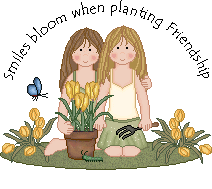
Pessach begins on the 15th day of the Jewish month of Nissan. It is the first of the three major festivals with both historical and agricultural significance (the other two are Shavuot and Sukkot). Agriculturally, it represents the beginning of the harvest season in Israel but little attention is paid to this aspect of the holiday.
The primary observances of Pessach are related to the Exodus from Egypt after generations of slavery. This story is told in Exodus, Ch. 1-15.

The name "Pessach" comes from the Hebrew root Pe-Samech-Chet
meaning to pass through, to pass over, to exempt or to spare. It refers to the fact that G-d "passed over" the houses of the Jews when he was slaying the firstborn of Egypt. In English, the holiday is known as Passover. "Pessach" is also the name of the sacrificial offering (a lamb) that was made in the Temple on this holiday. The holiday is also referred to as Chag he-Aviv (the Spring
Festival), Chag ha Matzoth
(the Festival of Matzahs), and Zman Cherutenu
(the Time of Our Freedom).
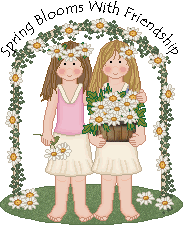
Chametz

Probably the most significant observance related to Pessach involves the removal of chametz (leaven) from our homes. This commemorates the fact that the Jews leaving Egypt were in a hurry, and did not have time to let their bread rise. It is also a symbolic way of removing the "puffiness" (arrogance, pride) from our souls.
Chametz includes anything made from the five major grains (wheat, rye, barley, oats and spelt) that has not been completely cooked within 18 minutes after coming into contact with water. Orthodox Jews of Ashkenazic background also avoid rice, corn, peanuts, and legumes (beans) as if they were chametz. All of these items are commonly
used to make bread, thus use of them was prohibited to avoid any confusion. Such additional items are referred to as "kitniyot."
We may not eat chametz during Pessach; we may not even own it or derive benefit from it. We may not even feed it to our pets or cattle. All chametz, including utensils used to cook chametz, must either be disposed of or sold to a non-Jew (they can be repurchased after the holiday). Pets' diets must be changed for the holiday, or the
pets must be sold to a non-Jew (like the food and utensils, the pets can be repurchased after the holiday ends). You can sell your chametz online at http://www.chabadcenter.org/.
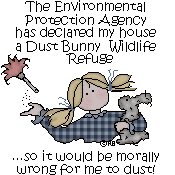
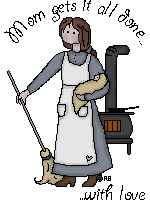
Cleaning

The process of cleaning the home of all chametz in preparation for Pessach is an enormous task. To do it right, you must prepare for several weeks and spend several days scrubbing everything down, going over the edges of your stove and fridge with a toothpick, covering all surfaces that come in contact with foil, etc., etc., etc.
After the cleaning is completed, the morning before the seder, a formal search of the house for chametz is undertaken, and any remaining chametz is burned.
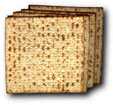
Matzot

The grain product we eat during Pessach is called matzah. Matzah is unleavened bread, made simply from flour and water and cooked very quickly. This is the bread that the Jews made for their flight from Egypt. We have come up with many inventive ways to use matzah; it is available in a variety of textures for cooking: matzah flour (finely
ground for cakes and cookies), matzah meal (coarsely ground, used as a bread crumb substitute), matzah farfel (little chunks, a noodle or bread cube substitute), and full-sized matzahs (about 10 inches square, a bread substitute).

Taanit Bechorot

The day before Pesach is the Fast of the Firstborn, a minor fast for all firstborn males, commemorating the fact that the firstborn Jewish males in Egypt were not killed during the final plague.
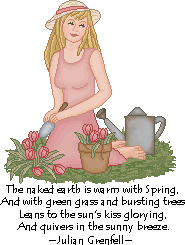
Seder

On the first night of Pesach (first two nights for Jews outside Israel), we have a special family meal filled with ritual to remind us of the significance of the holiday. This meal is called a seder, from a Hebrew root word meaning "order," because there is a specific set of information that must be discussed in a specific order. It
is the same root from which we derive the word "siddur"
(prayer book). An overview of a traditional seder is included below.

Pessach lasts for seven days (eight days outside of Israel). The first and last days of the holiday (first two and last two outside of Israel) are days on which no work is permitted. Work is permitted on the intermediate days. These intermediate days on which work is permitted are referred to as Chol Ha-Mo'ed.
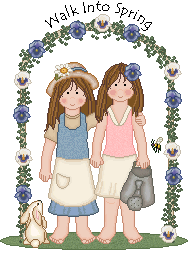
The text of the Pessach seder is written in a book called the haggadah.
Now, what does that mean?
1. Kaddesh: Sanctification |
|
 A blessing over wine in honor of the holiday. The wine is drunk, and a second cup is poured. A blessing over wine in honor of the holiday. The wine is drunk, and a second cup is poured.
|
2. Urechatz: Washing |
|
 A washing of the hands without a blessing, in preparation for eating the Karpas. A washing of the hands without a blessing, in preparation for eating the Karpas.
|
3. Karpas: Vegetable |
|
 A vegetable (usually parsley) is dipped in salt water and eaten. The vegetable symbolizes the lowly origins of the Jewish people; the salt water symbolizes the tears shed as a result of our slavery. Parsley is a good vegetable to use for this purpose, because when you shake off the salt water, it looks like tears. A vegetable (usually parsley) is dipped in salt water and eaten. The vegetable symbolizes the lowly origins of the Jewish people; the salt water symbolizes the tears shed as a result of our slavery. Parsley is a good vegetable to use for this purpose, because when you shake off the salt water, it looks like tears.
|
4. Yachatz: Breaking |
|
 One of the three matzahs on the table is broken. Part is returned to the pile, the other part is set aside for the afikomen (see below). One of the three matzahs on the table is broken. Part is returned to the pile, the other part is set aside for the afikomen (see below).
|
5. Maggid: The Story |
|
 A retelling of the story of the Exodus from Egypt and the first Pessach. This begins with the youngest person asking The Four Questions, a set of questions about the proceedings designed to encourage participation in the seder. The Four Questions are also known as Mah Nishtanah (Why is it
different?), which are the first words of the Four Questions. This is often sung. See below. A retelling of the story of the Exodus from Egypt and the first Pessach. This begins with the youngest person asking The Four Questions, a set of questions about the proceedings designed to encourage participation in the seder. The Four Questions are also known as Mah Nishtanah (Why is it
different?), which are the first words of the Four Questions. This is often sung. See below.
-
The maggid is designed to satisfy the needs of four different types of people: the wise one, who wants to know the technical details; the wicked one, who excludes himself (and learns the penalty for doing so); the simple one, who needs to know the basics; and the one who is unable to ask, who doesn't even know enough to
know what he needs to know. -
At the end of the maggid, a blessing is recited over the second cup of wine and it is drunk.
|
6. Rachtzah: Washing |
|
 A second washing of the hands, this time with a blessing, in preparation for eating the matzah A second washing of the hands, this time with a blessing, in preparation for eating the matzah
|
7. Motzi: Blessing over Grain Products |
|
 The ha-motzi blessing, a generic blessing for bread or grain products used as a meal, is recited over the matzah. The ha-motzi blessing, a generic blessing for bread or grain products used as a meal, is recited over the matzah.
|
8. Matzah: Blessing over Matzah |
|
 A blessing specific to matzah is recited, and a bit of matzah is eaten. A blessing specific to matzah is recited, and a bit of matzah is eaten.
|
9. Maror: Bitter Herbs |
|
 A blessing is recited over a bitter vegetable (usually raw horseradish; sometimes romaine lettuce), and it is eaten. This symbolizes the bitterness of slavery. The maror is dipped charoset, a mixture of apples, nuts, cinnamon and wine, which symbolizes the
mortar used by the Jews in building during their slavery. A blessing is recited over a bitter vegetable (usually raw horseradish; sometimes romaine lettuce), and it is eaten. This symbolizes the bitterness of slavery. The maror is dipped charoset, a mixture of apples, nuts, cinnamon and wine, which symbolizes the
mortar used by the Jews in building during their slavery.
Note that there are two bitter herbs on the seder plate: one labeled Maror and one labeled Chazeret. The one labeled Maror should be used for Maror and the one labeled Chazeret should be used in the Korech, below.
|
10. Korech: The Sandwich |
|
 Rabbi Hillel was of the opinion that the maror should be eaten together with matzah and the paschal offering in a sandwich. In his honor, we eat some maror on a piece of matzah, with some charoset (we don't do
animal sacrifice anymore, so there is no paschal offering to eat). Rabbi Hillel was of the opinion that the maror should be eaten together with matzah and the paschal offering in a sandwich. In his honor, we eat some maror on a piece of matzah, with some charoset (we don't do
animal sacrifice anymore, so there is no paschal offering to eat).
|
11. Shulchan Orech: Dinner |
|
 A festive meal is eaten. There is no particular requirement regarding what to eat at this meal (except, of course, that chametz cannot be eaten). Among Ashkenazic Jews, gefilte fish and matzah ball soup are traditionally eaten at the beginning of the meal. Roast chicken or turkey are common as a main course, as is beef
brisket. A festive meal is eaten. There is no particular requirement regarding what to eat at this meal (except, of course, that chametz cannot be eaten). Among Ashkenazic Jews, gefilte fish and matzah ball soup are traditionally eaten at the beginning of the meal. Roast chicken or turkey are common as a main course, as is beef
brisket.
|
12. Tzafun: The Afikomen |
|
 The piece of matzah set aside earlier is eaten as "desert," the last food of the meal. Different families have different traditions relating to the afikomen. Some have the children hide it, while the parents have to either find it or ransom it back. Others have the parents hide it. The idea is to keep the children awake
and attentive throughout the pre-meal proceedings, waiting for this part. The piece of matzah set aside earlier is eaten as "desert," the last food of the meal. Different families have different traditions relating to the afikomen. Some have the children hide it, while the parents have to either find it or ransom it back. Others have the parents hide it. The idea is to keep the children awake
and attentive throughout the pre-meal proceedings, waiting for this part.
|
13. Barech: Grace after Meals |
|
 The third cup of wine is poured, and Birkat ha Mazon (grace after meals) is recited. At the end, a blessing is said over the third cup and it is drunk. The fourth cup is poured, including a cup set aside for the prophet Eliyahu, who is supposed to herald the Messiah, and is supposed to come on Pessach to do this. The door
is opened for a while at this point (supposedly for Eliyahu) The third cup of wine is poured, and Birkat ha Mazon (grace after meals) is recited. At the end, a blessing is said over the third cup and it is drunk. The fourth cup is poured, including a cup set aside for the prophet Eliyahu, who is supposed to herald the Messiah, and is supposed to come on Pessach to do this. The door
is opened for a while at this point (supposedly for Eliyahu)
|
14. Hallel: Praises |
|
 Several psalms are recited. A blessing is recited over the last cup of wine and it is drunk. Several psalms are recited. A blessing is recited over the last cup of wine and it is drunk.
|
15. Nirtzah: Closing |
|
 A simple statement that the seder has been completed, with a wish that next year, we may celebrate Pessach in Jerusalem (i.e., that the Messiah will come within the next year). This is followed by various hymns and stories. A simple statement that the seder has been completed, with a wish that next year, we may celebrate Pessach in Jerusalem (i.e., that the Messiah will come within the next year). This is followed by various hymns and stories.
 |
Many people think of Pesach as a time of deprivation: a time when we cannot eat bread or other leavened foods. This is not the traditional way of viewing the holiday. Pessach is Zeman Herutenu, the Time of Our Freedom, and the joy of that time is evident in the music of the season. There are many joyous songs sung during the seder.
Mah Nishtanah (Why is it Different?)

This is the tune sung during the youngest participant's recitation of the Four Questions.
|
Why is this night different from all other nights, from all other nights? |
Mah nishtanah ha-lahylah ha-zeh mi-kol ha-layloht, mi-kol ha-layloht? |
On all other nights, we may eat chametz and matzah, chametz and matzah. On this night, on this night, only matzah. |
She-b'khol ha-layloht anu okhlin chameytz u-matzah, chameytz u-matzah. Ha-lahylah ha-zeh, ha-lahylah ha-zeh, kooloh matzah. |
On all other nights, we eat many vegetables, many vegetables. On this night, on this night, maror. |
She-b'khol ha-layloht anu okhlin sh'ar y'rakot, sh'ar y'rakot. Ha-lahylah ha-zeh, ha-lahylah ha-zeh, maror. |
On all other nights, we do not dip even once. On this night, on this night, twice. |
She-b'khol ha-layloht ayn anu mat'bilin afilu pa'am echat, afilu pa'am echat. Ha-lahylah ha-zeh, ha-lahylah ha-zeh, sh'tay p'amim. |
On all other nights, we eat either sitting or reclining, either sitting or reclining. On this night, on this night, we all recline. |
She-b'khol ha-layloht anu okhlin bayn yosh'bin u'vayn m'soobin, bayn yosh'bin u'vayn m'soobin. Ha-lahylah ha-zeh, ha-lahylah ha-zeh, koolanu m'soobin. |
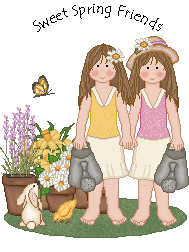
Recipe for Charosset

This fruit, nut and wine mix is eaten during the seder. It is meant to remind us of the mortar used by the Jews to build during the period of slavery. It should have a coarse texture. The ingredient quantities listed here are at best a rough estimate. The recipe below makes a very large quantity, but we usually wind up making more
before the holiday is over. Other fruits or nuts can be used.

Shred the apples. Add all other ingredients. Allow to sit for 3-6 hours, until the wine is absorbed by the other ingredients. Serve on matzah. Goes very well with horseradish.
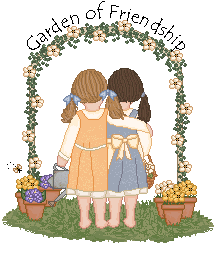
A Jewish man took his Passover lunch to eat outside in the park. He sat down on a bench and began eating. Since Jews do not eat leavened bread during the eight day holiday, he was eating Matzoh, a flat crunchy unleavened bread that has dozens of perforations.
A little while later a blind man came by and sat down next to him. Feeling neighborly, the Jewish man passed a sheet of matzo to the blind man.
The blind man handled the matzo for a few minutes, looked puzzled, and finally exclaimed, "Who wrote this crap?"

A Phone Call :)

Morris calls his son in NY and says, "Benny, I have something to tell you. However, I don't want to discuss it. I'm merely telling you because you're my oldest child, and I thought you ought to know. I've made up my mind, I'm divorcing Mama."
The son is shocked, and asks his father to tell him what happened.
"I don't want to get into it. My mind is made up."
"But Dad, you just can't decide to divorce Mama just like that after 54 years together. What happened?"
"It's too painful to talk about it. I only called because you're my son, and I thought you should know. I really don't want to get into it anymore than this. You can call your sister and tell her. It will spare me the pain."
"But where's Mama? Can I talk to her?"
"No, I don't want you to say anything to her about it. I haven't told her yet. Believe me it hasn't been easy. I've agonized over it for several days, and I've finally come to a decision. I have an appointment with the lawyer the day after tomorrow."
"Dad, don't do anything rash. I'm going to take the first flight down. Promise me that you won't do anything until I get there."
"Well, all right, I promise. Next week is Passover. I'll hold off seeing the lawyer until after the Seder. Call your sister in NJ and break the news to her. I just can't bear to talk about it anymore."
A half hour later, Morris receives a call from his daughter who tells him that she and her brother were able to get tickets and that they and the children will be arriving in Florida the day after tomorrow. "Benny told me that you don't want to talk about it on the telephone, but
promise me that you won't do anything until we both get there."
Morris promises. After hanging up from his daughter, Morris turns to his wife and says, "Well, it worked this time, but what are we going to do next Yom Tov to get them to come down?"

Visit another great website on Pessach: Click here.
[ Jewish World ]
[
Home ] [ Site Map ] [
Guestbook ] [ Email ]
Text by Judaism 101
 


  



Graphics by
Graphics by Irene -
Country Patch Collections - Kids Domain -
Rajiv's Graphics -
Amreta's Graphic Corner
|